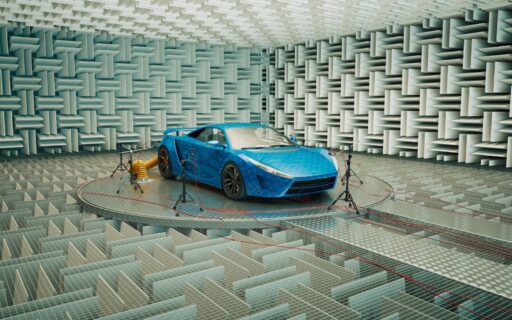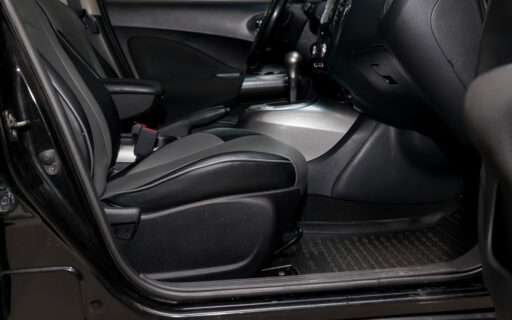Knauf Automotive
Vehicle soundproofing
Soundproofing a car - what are the best materials for soundproofing? Challenges and opportunities
The soundproofing of cars is crucial to driving comfort and safety. Modern, lightweight materials, such as expanded polypropylene (EPP), effectively dampen noise without increasing vehicle weight. On this page you’ll find articles on car soundproofing technology, challenges and modern solutions. Learn how innovative materials can improve the acoustic comfort of your vehicle.
Latest articles
Vehicle soundproofing
Today’s cars are larger than before, yet they have become relatively lighter. Manufacturers are abandoning the use of heavy and difficult to recycle materials, which is dictated mainly by ecological requirements. On the other hand, new, “slimmed down” models of cars are less damped than those manufactured just a few years ago. Modern, ultralight material technologies are the optimal solution to this problem.
Why is the car noisy when driving?
Traditional materials, which were once effective in dampening boot or chassis noise, are often used in minimum thicknesses or replaced with lighter components made of hard masses and plastics. As a result, many users of modern vehicles complain about poor soundproofing of the cabin. All gusts of wind, the sound of falling rain or the rustle of tires penetrate directly into the interior, sometimes causing considerable discomfort. The negative effects of “slimming down the vehicles” are particularly felt by SUV and VAN users. The high seating position of the bodywork causes increased air resistance, and the massive wheels – greater rolling resistance, which generates a louder noise while driving.
Car soundproofing – what challenges do auto manufacturers face?
The problem of insufficient soundproofing layers no longer affects only popular car models, but also cars in the premium segment. It is due to the reduction in the number of relatively heavy layers of noise insulating materials. Some time ago, manufacturers used thick carpets, under which other sound-insulating materials, such as felt or sponges, were placed. In addition, sensitive points in the structure of the car body were protected with bituminous mass. Today, such solutions are generally not found in new car models. The automotive industry is undergoing a dynamic transformation towards electric and hybrid drives, and manufacturers are looking for a balance between the range of electric cars and their weight.
Insufficient battery capacity, long charging times and a low number of charging stations for electric cars do not guarantee comfortable and trouble-free travel, which is one of the barriers to the development of electromobility. In this way, extending the distance that can be covered by an electric car becomes more important than optimal soundproofing of the car’s interior. It seems, however, that soon the constructors will have to solve this problem and find an effective way to soundproof cars without increasing their own weight.
The most important vehicle structural components for soundproofing
The greatest amount of noise penetrates into the car cabin through the wheel arches, floor, luggage compartment and doors. In the absence of adequate soundproofing in these areas, the noise of rolling wheels and the sound of stones hitting the chassis can be well heard by drivers and passengers. A good soundproofing of the car floor can be a way to eliminate at least some of these sounds. In this way, the characteristic drive and suspension noises can be effectively eliminated, which is particularly important in 4×4 vehicles. It is similar with a large and often poorly soundproofed boot, which in the case of SUVs or estate cars resonates with the passenger area and generates annoying noises. It is also very important to properly soundproof the roof of the car, otherwise during heavy rain, for example, it will produce a characteristic tin sound. In such places modern, flexible foamed plastics, such as EPP, are perfectly applicable. This ultralight, easily formable material is now used for acoustic insulation in critical areas of modern vehicle construction.
What materials work well for soundproofing cars? Foamed polypropylene (EPP)
One of the biggest advantages of foamed polypropylene (EPP) is that it is easy to process by compression moulding. Vibration-damping elements in a car produced from this material can be formed into almost any shape and fit into hard to reach places, saving valuable space. A good example can be the interior of the trunk, which usually have a part intended for repair tools, such as spare wheel, jack or wheel wrenches. EPP material has been used for many years for the production of not only car soundproof mats, but also “tool boxes” placed inside the spare wheel or all kinds of storage compartments allowing for functional development of recesses. Another element difficult to soundproof are car doors, which hide irregularly shaped empty spaces, reinforcements and electronic mechanisms for opening windows or powering speakers. EPP soundproofing foams with individually adjusted shapes will prove very useful in such applications.
The excellent acoustic properties of this material make it possible to effectively eliminate buzzing, clattering and the so-called “tin door effect”. Covering open spaces with this highly elastic and vibration-absorbing material not only improves acoustic comfort, but also protects passengers in the event of a side impact collision. The flexible foam material also makes it possible to soundproof the car roof economically. The components can be easily adapted to the shape of the headlining for an optimum high-class finish.
Knauf – a proven partner in the production of plastics used for vehicle soundproofing
We are a leading supplier and partner in the production of plastic materials that find a number of applications in the automotive industry. They are also great for soundproofing cars. The solutions we use, such as foamed polypropylene (EPP), enable effective noise dampening while keeping the weight of the vehicle low. With our innovative technologies, manufacturers can create more comfortable and quieter car interiors. Contact us to find out how we can help you.




